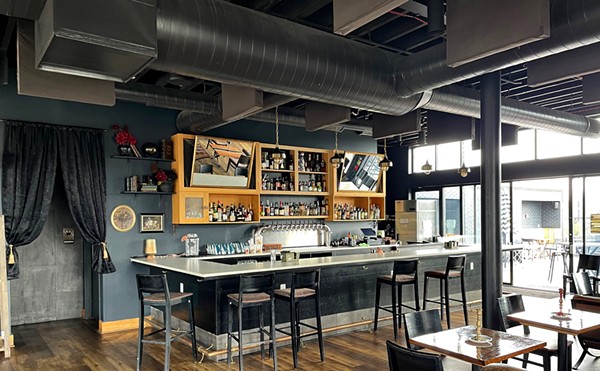
“…the color is ruby-red, clear, fading out to salmon, almost rose-petal red, concentration is medium, there’s no sign of gas or flocculation, viscosity is medium. On to the nose: It’s a clean wine, it’s youthful, dominated by blue and black fruits. I’m picking up some black cherry, ripe blueberries, blackberry, smelling fresh-cut rose, some lavender; definitely some wood in this wine, I’m calling new oak, detecting some cooking spices, some cinnamon, perhaps nutmeg. It’s a dry wine, medium body, red, blue and black fruits, structurally it’s balanced, acidity is medium, perhaps medium-plus, alcohol is medium, tannins are medium, definitely complex. I’m going pinot noir from a warmer climate, definitely New World, possibly New Zealand or United States. I’m going with United States, California, Sonoma, 2011 vintage.”
That Jim Fink was able to pick up a glass of wine knowing only that it was red and correctly identify its varietal, country, state, region, county and vintage simply by examining its contents might seem like a parlor trick, but it’s really nothing more than deductive logic.
Fink, the sommelier for Wood & Wine in Avon, is seated at the counter at Grady’s Fine Wines with his regular tasting group, all of whom are preparing for the Advanced Sommelier Exam. It’s the last step before the even more demanding Master Sommelier Exam, a test with a meager 8-percent pass rate.

The five-day, three-part exam demands a comprehensive mastery of wine, including history and theory, all growing regions, fine-dining service and success in the panic-inducing blind tasting. Since the Court of Master Sommeliers was established 40 years ago, only 200 people have earned the mighty MS badge.
It’s a rarified if little known sliver of the beverage world, but a recently released documentary called Somm hopes to change that. Directed by Cleveland native Jason Wise, the film follows a small group of friends in the lead-up to the big event. For those who’ve been through it, the movie brings back chilling memories.
“It’s a part of my life that I lived through but nobody really ever saw,” says Matthew Citriglia, a master sommelier who worked for years in Cleveland before relocating to Columbus. “A lot of things ring true as far as the intensity of what I went through during the whole exam process. Because it’s on film and people can see it, it has a greater impact than anything I’ve ever tried to explain.”
The process was years in the making for Citriglia, who like all hopefuls sacrificed a great deal of time, money and sanity to prepare for the test.
“I spent years in my basement doing nothing more than reading and outlining and researching wine,” he says. “To understand why the wine tastes like it does you have to have the theoretical knowledge of the growing region, the soil types, the varietals planted there, the philosophy that goes into growing the grapes and making the wines.”
It might seem like an exercise in mental masturbation, but the end result of this obsessive edification — and let’s be honest, it is a compulsion plain and simple — is to provide you, the diner, with a bottle of wine that you’ll thoroughly enjoy.
“The point of this is not about impressing your friends,” explains Robert Labuda of Zack Bruell Restaurants, who is tasting alongside Fink. “If you can’t distinguish and describe the difference between a cabernet and a shiraz in an exam, then how will you do a good job selling them to your guests? Ultimately, it’s about selling wines.”

Citriglia takes it a step further: “The job of a sommelier is not to sell wines that they like, but to crawl into their customer’s mind and sell them wines that they like. That’s what makes a somm different from a wine critic.”
The film screens just twice locally: Tuesday, August 26, at the Capitol Theatre, and Wednesday, August 27, at the Cedar Lee. At Toast, two local MSs, Citriglia and Larry O’Brien, will compare and contrast Old World and New World wines. At Wine Spot, a “somm-like blind tasting” will give guests a chance to correctly identify a group of unknown wines.
Back at Grady’s, the wine-sniffing pals are getting a little giddy, despite spitting out a large percentage of what they taste. When one, whose nose is deep into a glass of red, says, “I’m getting some wood,” he receives the appropriate level of ball busting.
While fun, these tastings are the only practical way a person can taste such a wide variety of wine and thus prepare for the exam.
“For the normal person working alone, it’s impossible—or very expensive,” says shop owner Manny Nieves, adding that the average test-taker spends between $3,000 and $5,000 per year on tasting wines. “Everybody gets together, brings a bottle of wine, and prepares together.”









